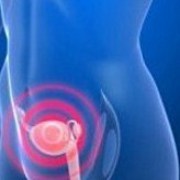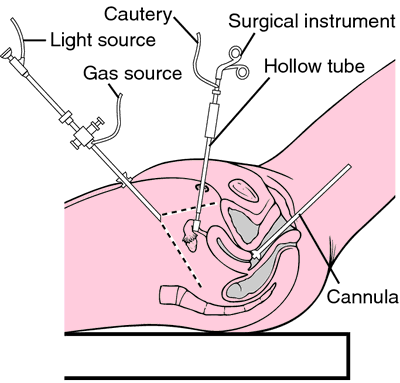 Photo: Getty Images
Photo: Getty Images
The National Institutes of Health (NIH) defines endometriosis as a condition in which the tissue that behaves like the cells lining the uterus grows in other areas of the body, causing pain, irregular bleeding, and possible infertility. The tissue growth typically occurs in the pelvic area, outside of the uterus, on the ovaries, bowel, rectum, bladder, and the delicate lining of the pelvis. However, the growths can also occur in other areas of the body.
According to the Mayo Clinic, with endometriosis, displaced endometrial tissue continues to act as it normally would: It thickens, breaks down and bleeds with each menstrual cycle. And because this displaced tissue has no way to exit the body, it becomes trapped. Surrounding tissue can become irritated, eventually developing scar tissue and adhesions.
Health care providers and researchers have said the exact cause of endometriosis is unknown. However, there are several theories.
One theory is called retrograde menstruation or reverse menstruation. The Mayo Clinic said that in retrograde menstruation, menstrual blood containing endometrial cells flows back through the fallopian tubes and into the pelvic cavity instead of out of the body. These displaced endometrial cells stick to the pelvic walls and surfaces of pelvic organs, where they grow and continue to thicken and bleed over the course of the menstrual cycle.
But because most women experience some amount of retrograde menstruation without developing endometriosis, HealthyWomen.org said, researchers believe something else may contribute to its development. For example, endometriosis could be an immune system problem or hormonal imbalance that enables the endometrial tissue to take root and grow after being pushed out of the uterus.
HealthyWomen.org went on to say that still other researchers believe in some women, certain abdominal cells mistakenly turn into endometrial cells. These same cells are the ones responsible for the growth of a woman's reproductive organs in the embryonic stage. It is believed something in the woman's genetic makeup or something she was exposed to in the environment in later life changes those cells so they turn into endometrial tissue outside the uterus. And there’s another school of thought that damage from a previous infection to cells that line the pelvis leads to endometriosis.
Another theory lays the blame on environmental factors. HealthyWomen.org reported this theory said toxins in the environment such as dioxin seem to affect reproductive hormones and immune system responses. It’s important to note, this notion has not been proven and is controversial in the medical community.
Sources:
http://www.ncbi.nlm.nih.gov/pubmedhealth/PMH0001913/
http://www.mayoclinic.com/health/endometriosis/DS00289
http://www.healthywomen.org/condition/endometriosis
Reviewed July 11, 2011
by Michele Blacksberg R.N.
Edited by Alison Stanton



Add a Comment1 Comments
While we don't yet understand all the mechanisms by which dioxin can lead to endo, it seems clear that the link is solid. This link was discovered in a landmark 1992 study of a dioxin-exposed colony of rhesus monkeys. Endometriosis Association researchers found that exposure to dioxin was directly correlated with the incidence of endometriosis, and that the severity of the disease was dependent upon the dose. [Fundamental & Applied Toxicology, 21:433-441]
The Endometriosis Association research program at Vanderbilt University School of Medicine continues to investigate the link between endo and environmental toxins, particularly endocrine disruptors such as dioxin and PCBs.
Women with endo (or those who wish to reduce the risk of endo in their families) are well-advised to avoid PVC plastics, pesticides, herbicides, chlorine, and fragrances, and to eat organic foods.
See the Endometriosis Association's book, "Endometriosis: The Complete Reference for Taking Charge of Your Health," for further information. It can be found at your local library or bookstore, or online at www.EndometriosisAssn.org.
September 1, 2011 - 1:39pmThis Comment